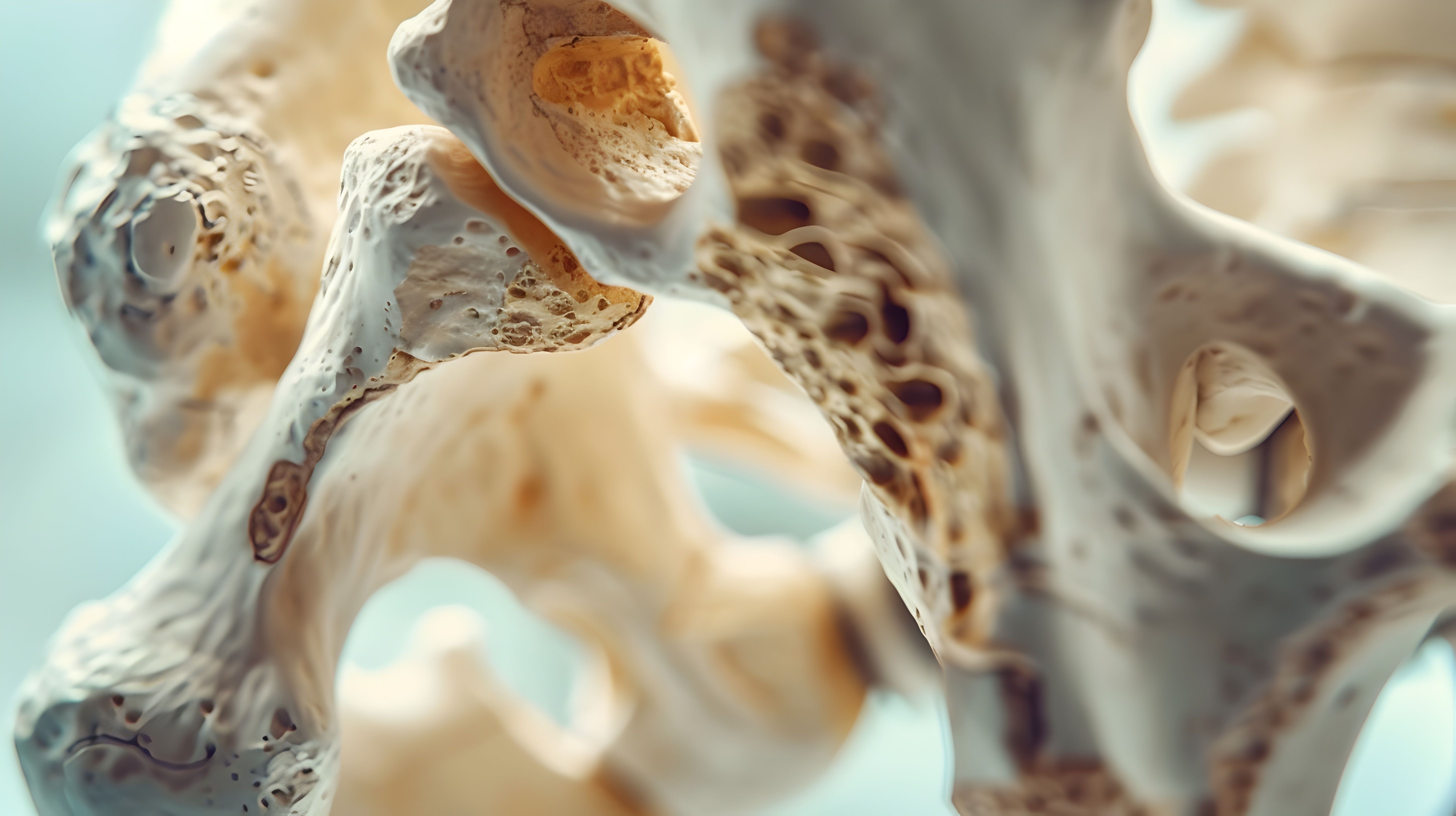Other Treatment Methods
- Adrenal hyperplasia
- Gestational diabetes
- Growth disorders in children
- Hashimoto's thyroiditis
- Hormone deficiency
- Hormone-producing tumors
- Hyperthyroidism
- Hypofunction of the adrenal cortex
- Hypothyroidism
- MODY (Maturity Onset Diabetes of the Young)
- Obesity
- Osteoporosis
- Overactivity of the adrenal cortex
- Sex hormones
- Type 1 diabetes
- Type 2 diabetes

© Freepik
Osteoporosis
Osteoporosis is a condition in which bone density decreases, making bones more brittle and prone to fractures - especially in the spine, hips, and wrists. hip and wrists. Endocrinology plays a central role here, as various hormones crucially control bone metabolism. An imbalance of these hormones can directly lead to bone loss or exacerbate it. One of the most common hormonal causes is a lack of estrogen in women after menopause. menopause.Estrogen protects the bones, and when it is lacking, bone decay accelerates. In men, a lack of testosterone can also lead to osteoporosis. Additionally, there are endocrine disorders such as an overactive thyroid, Cushing's disease or diabetes mellitus, which increase the risk of osteoporosis. There are also some metabolic disorders that increase the risk of osteoporosis, such as celiac disease. overactive thyroid, Cushing's disease or diabetes mellitus, which increase the risk of osteoporosis. There are also some metabolic disorders that increase the risk of osteoporosis, such as celiac disease.
Symptoms of osteoporosis
The symptoms of osteoporosis are often initially inconspicuous. Many affected individuals do not notice anything until a fracture occurs. Early signs can be back pain or a change in posture (keyword hunchback). In the advanced stage, spontaneous fractures or fractures after minor falls occur.
Diagnosis and treatment of osteoporosis
The diagnosis is made by the doctor or physician using bone density measurement or QCT (quantitative computed tomography), which measure the mineral content in the bone, blood tests to clarify hormonal or secondary causes, and X-rays or CT scans. Treatment then usually consists of several components: medication therapy, treatment of possible hormonal causes, administration of vitamin D and, if necessary, calcium to support bone metabolism, as well as exercise and strength training. Overall, osteoporosis is not just a 'bone disease', but often an endocrinological problem that can be specifically identified and treated.








